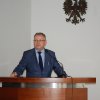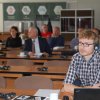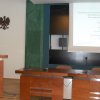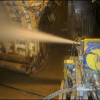On the 25th of June, 2018, a seminar was held at the Central Mining Institute, summarising project GASDRAIN: “Development of improved methane drainage technologies by stimulating coal seams for major risk prevention and increased coal output”. The main objective of the project was to develop drainage hole stimulation techniques and improved coal bed pre-mining methane drainage technologies.
Methane hazard constitutes one of the most dangerous natural hazards occurring in hard coal mines. An increase by approximately 63% in methane emission per one ton of extracted coal has been registered in recent years, which comes as a result of increased mining depth and coal extraction concentration. Increased methane emissions are not only a significant safety hazard, but also a reason for the limitation of coal extraction intensity. Soon they will also lead to high emission fees, similarly to carbon dioxide.
A specially designed hydroslotting system, which is a technique for coal bed destressing by cutting out discs in the body of coal using a high-pressure water stream, was constructed as part of the project. “Tests of the system were conducted at the Department of Underground Research and Surface Maintenance of Experimental Mine “Barbara”, which determined factors such as the operational safety of all system devices, mining nozzle efficiency and output, and the water jet cutting time necessary to perform drainage hole stimulation,” says Janusz Makówka, dr hab. Eng., prof. GIG, project director. “The device makes it possible to work in boreholes reaching up to 100 metres inside the rock mass and cut coal with a water jet with a pressure of 1000 bars.”
The hydroslotting system developed by the project fulfils its basic function and is adapted for operation under the conditions of underground coal mine workings. Studies utilising the device were conducted at the Zofiówka JSW mine.
The GASDRAIN international project was realised using funds from the Research Fund for Coal and Steel and coordinated by GIG, while its partners included Jastrzębska Spółka Węglowa SA and the Oil and Gas Institute from Poland, the Hunosa Group and Aitemin Institute from Spain, Imperial College London from Great Britain, RWTH from Germany and the INERIS institute from France.











